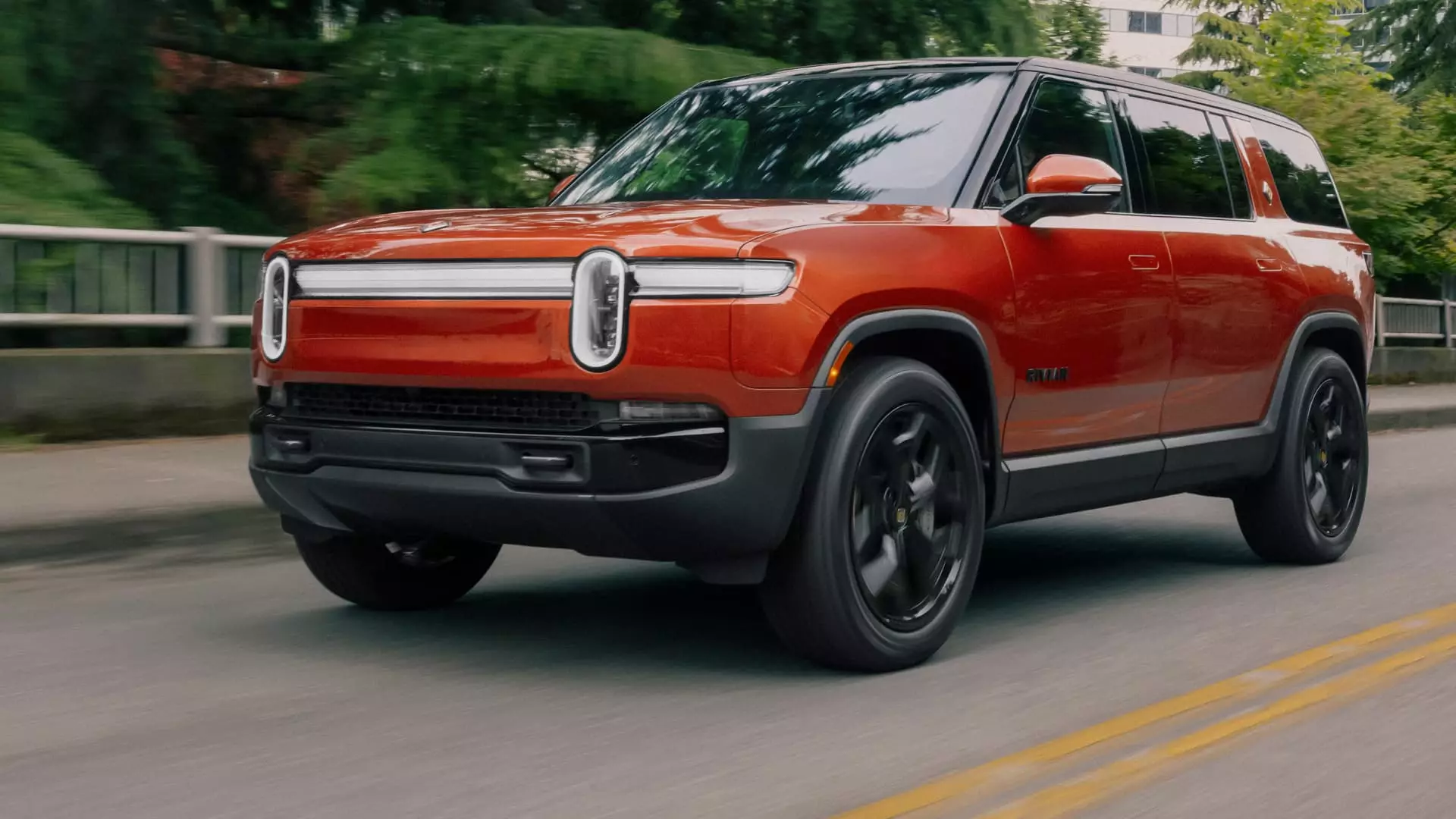Rivian Automotive has started to gain traction in the competitive electric vehicle (EV) landscape, as evidenced by its recent earnings report that surpassed Wall Street’s expectations for the fourth quarter of the fiscal year. The company reported a gross profit of $170 million, marking its first such achievement. However, despite this positive signal, Rivian has cautioned investors regarding potential hurdles in the upcoming years, forecasting lower sales in 2025.
Despite having exceeded earnings expectations, Rivian’s cautious outlook has drawn attention. The company outlined goals for 2025, predicting deliveries between 46,000 and 51,000 units, slightly lower than the previous year’s tally of 51,579. This projected decline raises questions about market demand and Rivian’s adaptability within a rapidly evolving automotive sector. While the company’s earnings on a gross profit basis are encouraging, stakeholders are looking for more clarity on its path towards sustained profitability. Currently, Rivian has not provided a timeline for achieving a profitable bottom line.
The electric vehicle sector is laden with obstacles, including fluctuating consumer demands and legislative uncertainties. Notably, Rivian’s CEO, RJ Scaringe, acknowledged “a lot of uncertainty” surrounding federal incentives that play a crucial role in bolstering EV adoption. The impending potential withdrawal of such incentives could significantly affect Rivian’s sales forecast, leading investors and analysts to scrutinize the company’s financial projections more rigorously.
Financial Figures: A Closer Examination
Breaking down Rivian’s fourth-quarter performance provides a clearer picture of its fiscal situation. The reported net loss of $743 million was an improvement compared to a staggering $1.52 billion loss from the same quarter in 2022. Although the reduction in net loss signals a positive trend, the figure remains substantial, bringing the total annual loss for 2024 to $4.75 billion. Rivian’s revenue for the fourth quarter reached $1.73 billion, significantly surpassing expectations of $1.4 billion. Furthermore, its revenue growth of roughly 31% compared to the previous year raises a nuanced discussion on the firm’s operational capacity in meeting increasing demand.
Rivian’s reliance on regulatory credits has become a vital part of its revenue stream, accounting for $299 million. While this route has bolstered financial results, reliance on these credits comes with risks. Changes in policy or regulations, particularly those that could be influenced by political shifts, may jeopardize this revenue source in the future. The company must remain vigilant to ensure its business model remains resilient in the face of shifting regulatory landscapes.
Looking ahead, Rivian’s strategic investments appear promising, if cautiously ambitious. The company plans to ramp up capital expenditures to between $1.6 billion and $1.7 billion in 2025, a notable increase from the previous year’s $1.41 billion. Central to these plans is the anticipated launch of Rivian’s “R2” midsize vehicle series, expected in 2026. The Company’s Chief Financial Officer, Claire McDonough, expressed optimism that the R2 series would catalyze growth and profitability.
However, with Rivian planning to temporarily idle its manufacturing plant in Normal, Illinois, during the latter part of the year for retooling, there are inherent risks and uncertainties associated with this transition. The idling could result in lower production in the short term, posing a challenge as the company strives to balance innovation with operational efficiency.
Rivian Automotive’s recent earnings report highlights a mixture of accomplishments and uncertainties. While the initial movement towards profitability and increased revenue is commendable, the company’s future hinges on external factors, including government policies and broader market conditions. Rivian must navigate these complexities as it seeks to carve out a sustained foothold in the electric vehicle space. Investors are left to ponder whether Rivian can realize its ambitious vision amidst industry headwinds, but the path remains laden with challenges that warrant careful consideration. As Rivian strives to electrify the world, the coming years will be pivotal in determining the company’s trajectory in this highly competitive market.

